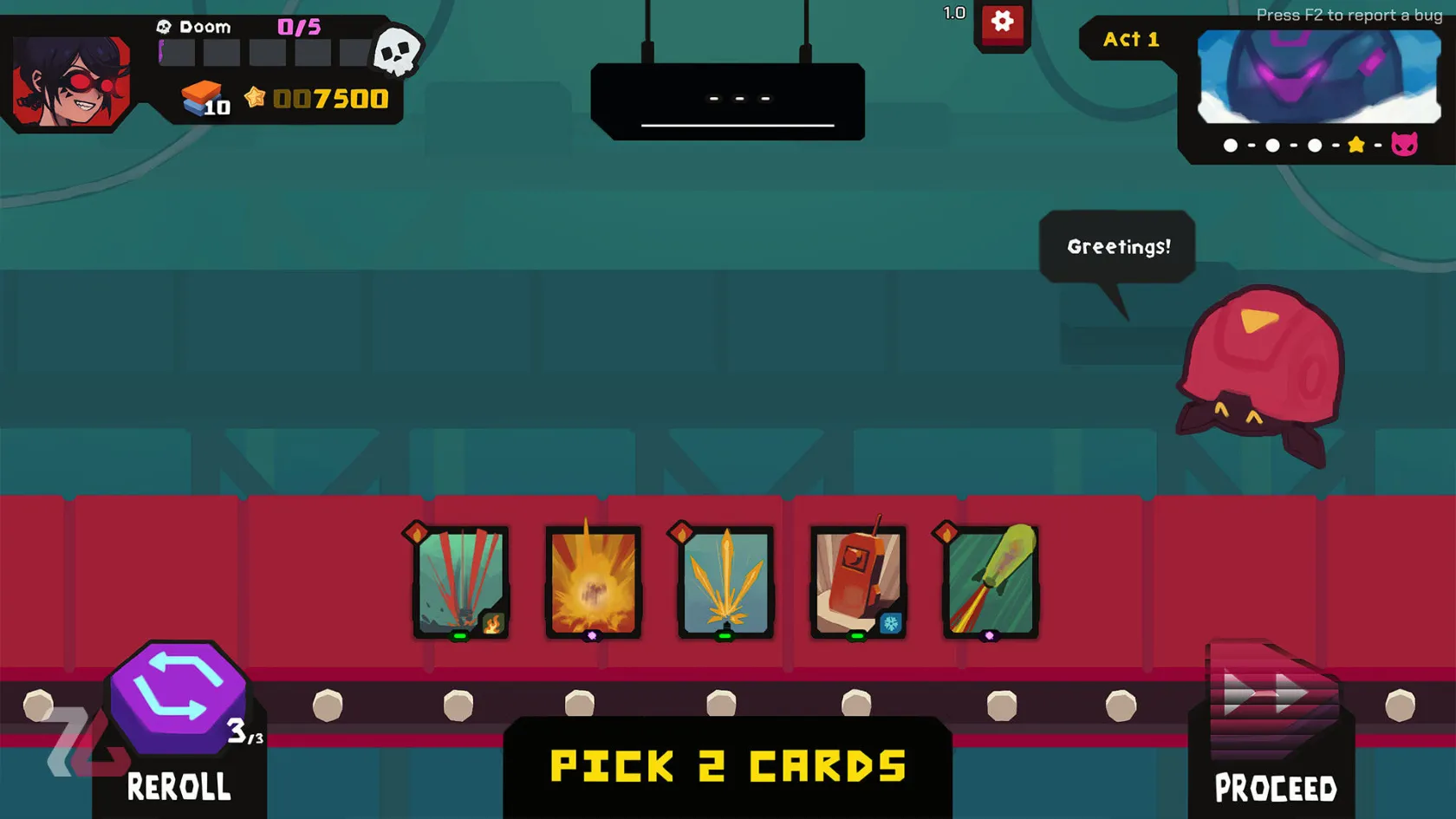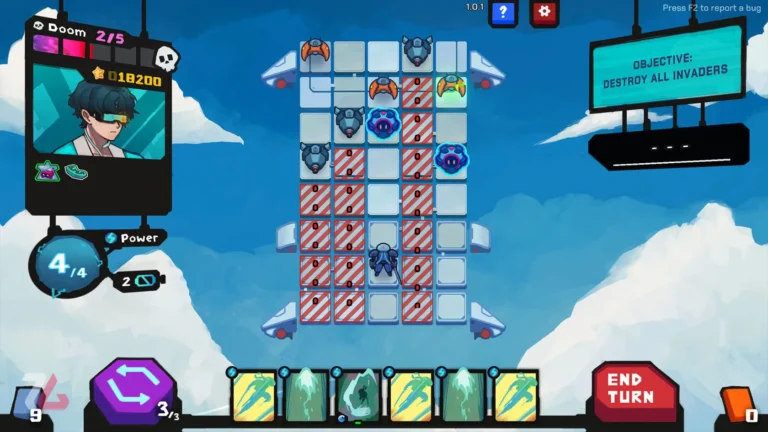If you caught the early previews of StarVaders, you might already be familiar with its promising concept. Developed by Pengonauts, this indie title teased an intriguing mix of turn-based strategy, roguelike progression, and deck-building gameplay—and now that it’s officially released, we can finally dive into what it truly offers.
A Simple Setup, But Engaging World-Building
StarVaders tells the story of a futuristic Earth under siege by alien invaders. You play as a pilot commanding a mechanized war machine—or “Mecha”—to push back the threat. While the narrative isn’t the game’s strongest suit, and it certainly doesn’t aim for deep storytelling, it still manages to offer occasional narrative reveals through a mysterious character who appears after missions, enriching the lore gradually with each run.
Tactical Grid Battles Meet Card Strategy
What really defines StarVaders is its gameplay loop. After selecting your preferred pilot and mecha unit, you face a series of grid-based battles against alien forces. Your objective? Defeat three alien bosses and survive the run.
Battles take place on tile-based maps, where enemies descend row by row. If they reach the lower rows and aren’t defeated in time, they generate Doom points. Accumulate five Doom points, and it’s game over. To prevent this, you use a limited hand of cards, which are drawn from a deck specific to your chosen pilot and mech. Each turn, you’ll need to decide how best to spend your action points on movement, attacks, or defensive strategies.
Card Variety and Deck Customization Are Highlights
The card system is where StarVaders shines. Cards are divided into several types—movement, offensive, and hybrid actions—and you can pick up new ones or remove less useful ones between levels or at in-game shops before boss fights. The diversity and synergy of cards allow for highly personalized strategies. And thanks to a touch of randomness in card draws, each run feels distinct, keeping gameplay fresh even across dozens of sessions.
A True Roguelike Experience

True to the roguelike genre, defeat in StarVaders sends you back to the beginning. However, not all progress is lost. You earn persistent upgrades, such as unlocking new pilots, mechs, or passive bonuses for future runs.
That said, the power curve between different mechs isn’t always well-balanced. For example, one of the early unlockable mechs focuses on close-range melee combat, which can feel underwhelming and riskier compared to the default ranged attacker. It’s a minor complaint, but one that slightly undercuts the satisfaction of progression.
Highly Addictive Gameplay Loop
Despite the above, StarVaders nails the core appeal of roguelikes: the addictive loop of trial, failure, and mastery. Even after losing, you’re motivated to try again—adjusting your deck, experimenting with new strategies, and progressing just a little further. The game’s design actively encourages repeated playthroughs, and each run feels like a learning experience.
It’s easy to lose hours experimenting with different cards and playstyles. The tactical nature of grid movement and turn planning feels almost chess-like, and the strategic depth remains strong even after multiple failed runs.
Polished Visual and Audio Design
Visually, StarVaders offers a clean, colorful aesthetic with well-designed enemies, dynamic card effects, and impactful visual cues like explosions and attack animations. The audio design also deserves praise—music and sound effects are crisp, fitting, and immersive, enhancing the tension and energy of each turn.
Final Verdict: A Must-Play for Roguelike and Card Game Fans
If you’re a fan of deck-building roguelikes like Slay the Spire or Into the Breach, StarVaders deserves a spot on your radar. It delivers a satisfying mix of strategy, luck, and customization, all wrapped in a polished presentation. While the storytelling is minimal and some balance tweaks are needed, the gameplay loop is endlessly engaging and offers hours of tactical fun.
